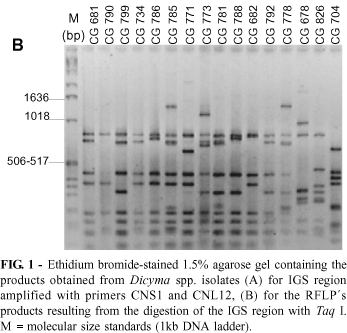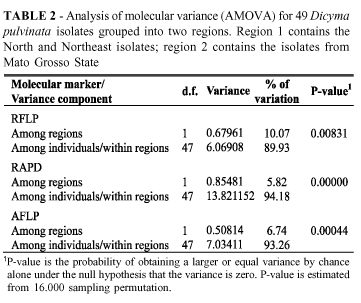Forty-nine Brazilian Dicyma pulvinata isolates were examined by morphological traits and RFLP, RAPD and AFLP analyses. This fungus is a mycoparasite of Microcyclus ulei, the causal agent of the most devastating rubber (Hevea brasiliensis) disease, known as "South American Leaf Blight" (SALB). These isolates were compared with an Indian isolate from Cercosporidium sp., and a French isolate from Cladosporium fulvum. They were also compared with Dicyma ampullifera from Papua New Guinea. The morphological parameters analyzed confirmed the identification of the Brazilian isolates. The graphic representations of the distance matrices of each molecular marker showed similar results. Dicyma pulvinata isolates from M. ulei were closely related, whereas the reference isolates examined were dispersed. Among the D. pulvinata isolates obtained from M. ulei, a significant pairwise distance was obtained, for all the molecular markers, between the isolates from the areas favorable to the occurrence of SALB (North and Northeast of Brazil) and the region of escape for the disease (Mato Grosso State).
fungi; molecular markers; biological control








